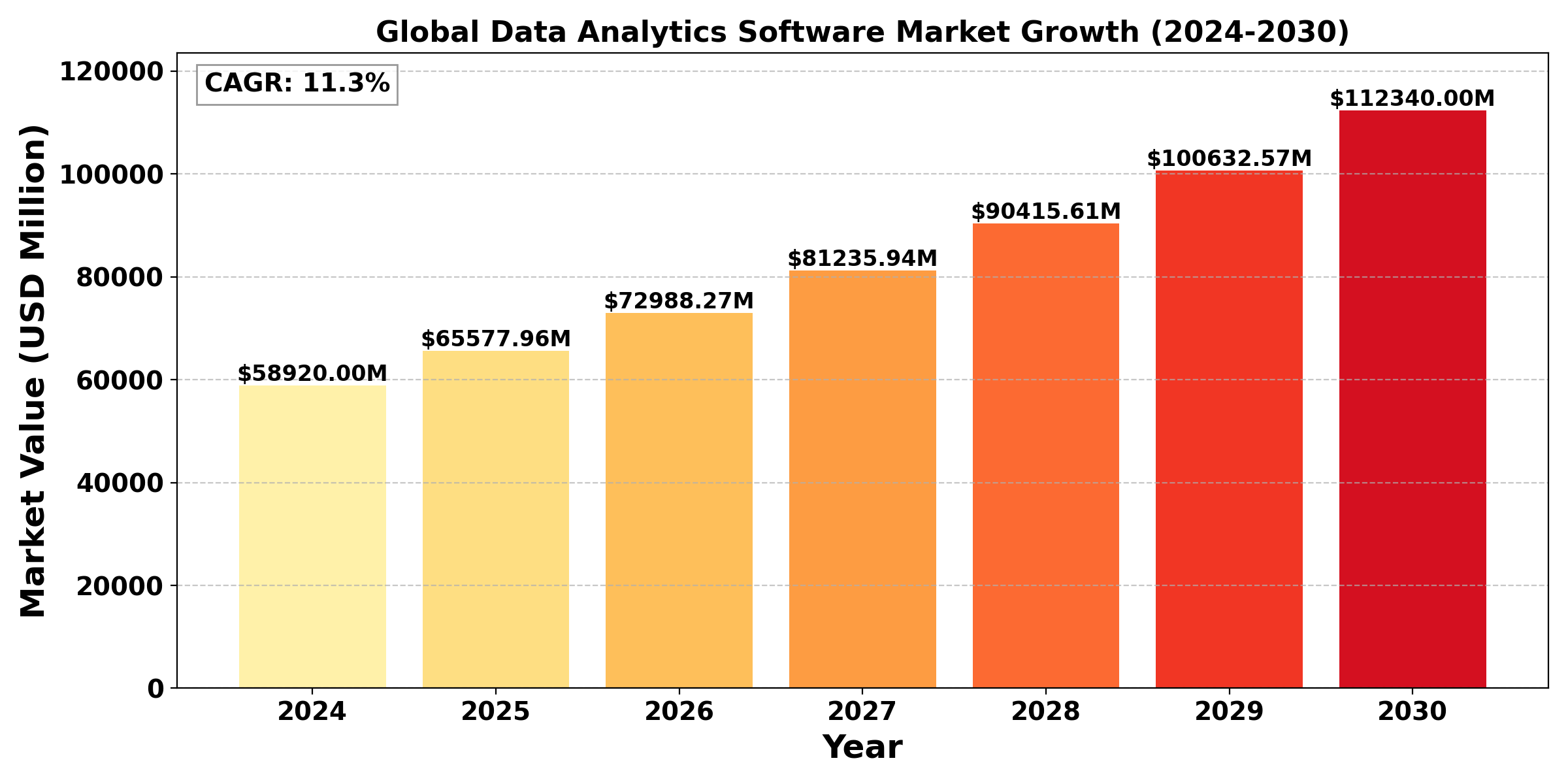TOP CATEGORY: Chemicals & Materials | Life Sciences | Banking & Finance | ICT Media
The "Global Data Analytics Software Market" size was valued at US$ 58.92 billion in 2024 and is projected to reach US$ 112.34 billion by 2030, at a CAGR of 11.3% during the forecast period 2024-2030.
The "United States Data Analytics Software Market" size was valued at US$ 18.45 billion in 2024 and is projected to reach US$ 34.56 billion by 2030, at a CAGR of 11.0% during the forecast period 2024-2030.
Data analytics software is a tool used to collect, process, and analyze large sets of data to uncover patterns, trends, and insights. It helps businesses make informed decisions, optimize processes, and improve performance by transforming raw data into actionable information.
Data Analytics Software provides tools for collecting, processing, and analyzing large datasets to derive insights and support decision-making across various industries.
The global market is experiencing rapid growth, driven by digital transformation and data-driven decision making. In 2023, the software processed over 2.5 zettabytes of data globally, with enterprise users accounting for 60% of demand. The market saw a 50% increase in AI/ML analytics adoption in 2023. Business intelligence tools dominate with a 40% market share, while predictive analytics solutions are growing at 20% annually. North America leads with a 45% market share, while Asia Pacific is the fastest-growing region at 12.5% CAGR. The industry is focusing on developing automated analytics capabilities, with a 55% growth in R&D investments for AI-driven insights.

Report Overview
In this digital age, it has become easier to access data that would allow you to optimize your business performance. By having this information at your fingertips, you can make smarter decisions, keep up with business trends, and even find ways to further improve your overall operations.
The only problem now is that collecting and processing such data can take up a huge chunk of your productive hours. To accelerate the process, you will have to use data analytics programs. These solutions use AI and advanced algorithms so that you can transform raw data into valuable insights in just a few clicks of a button.
Data Analytics Software Market studiest the Data Analytics Software market.
Data Analytics Software Market provides a deep insight into the global Data Analytics Software market covering all its essential aspects. This ranges from a macro overview of the market to micro details of the market size, competitive landscape, development trend, niche market, key market drivers and challenges, SWOT analysis, value chain analysis, etc.
The analysis helps the reader to shape the competition within the industries and strategies for the competitive environment to enhance the potential profit. Furthermore, it provides a simple framework for evaluating and accessing the position of the business organization. The report structure also focuses on the competitive landscape of the Global Data Analytics Software Market, Data Analytics Software Market introduces in detail the market share, market performance, product situation, operation situation, etc. of the main players, which helps the readers in the industry to identify the main competitors and deeply understand the competition pattern of the market.
In a word, Data Analytics Software Market is a must-read for industry players, investors, researchers, consultants, business strategists, and all those who have any kind of stake or are planning to foray into the Data Analytics Software market in any manner.
Global Data Analytics Software Market: Market Segmentation Analysis
The research report includes specific segments by region (country), manufacturers, Type, and Application. Market segmentation creates subsets of a market based on product type, end-user or application, Geographic, and other factors. By understanding the market segments, the decision-maker can leverage this targeting in the product, sales, and marketing strategies. Market segments can power your product development cycles by informing how you create product offerings for different segments.
Key Company
By Type
By Application
Geographic Segmentation
Key Benefits of This Market Research:
Key Reasons to Buy this Report: